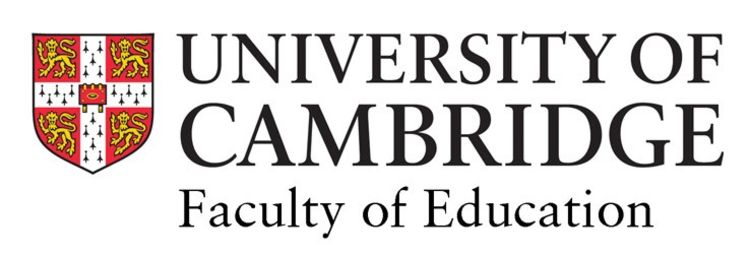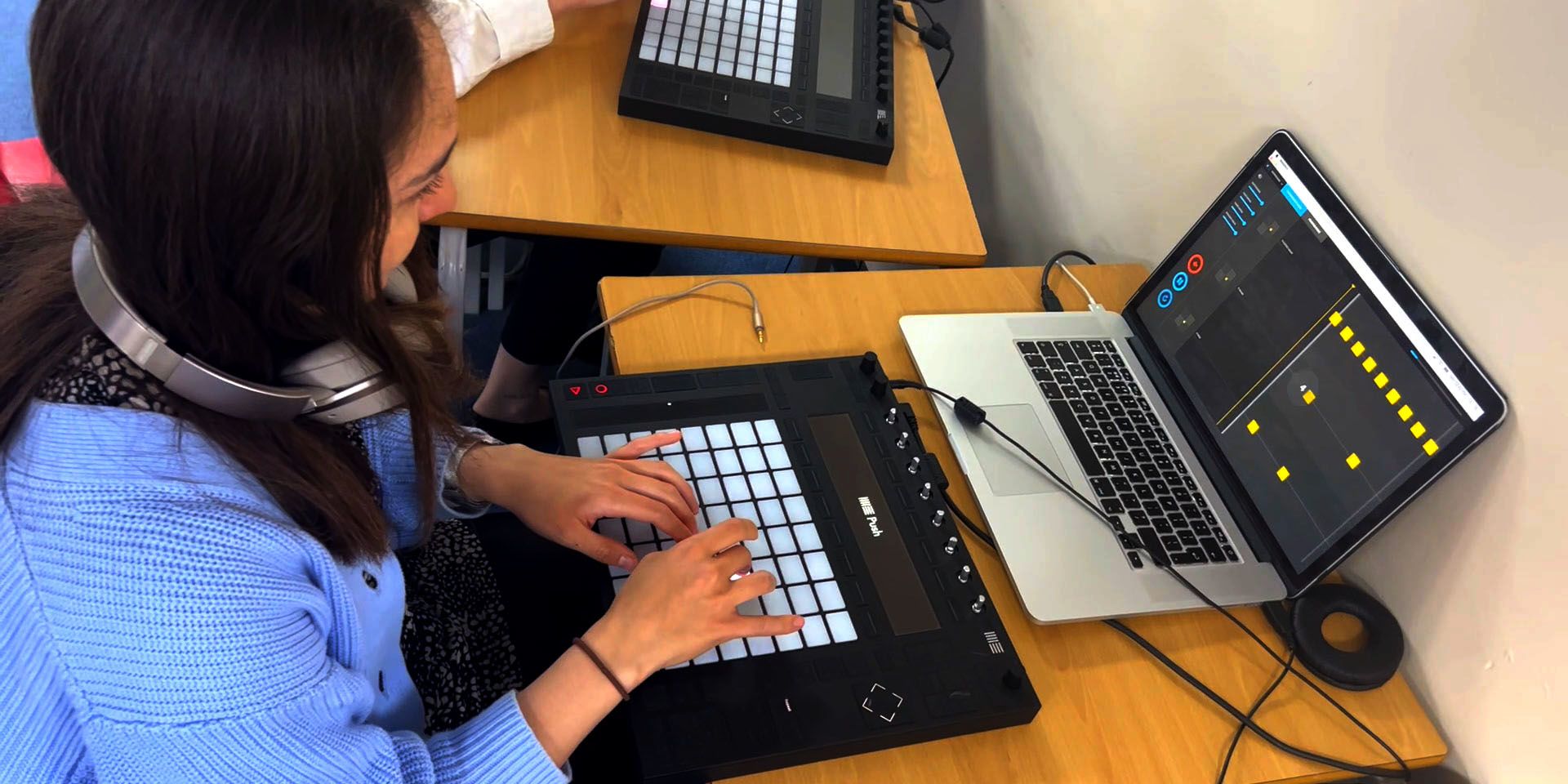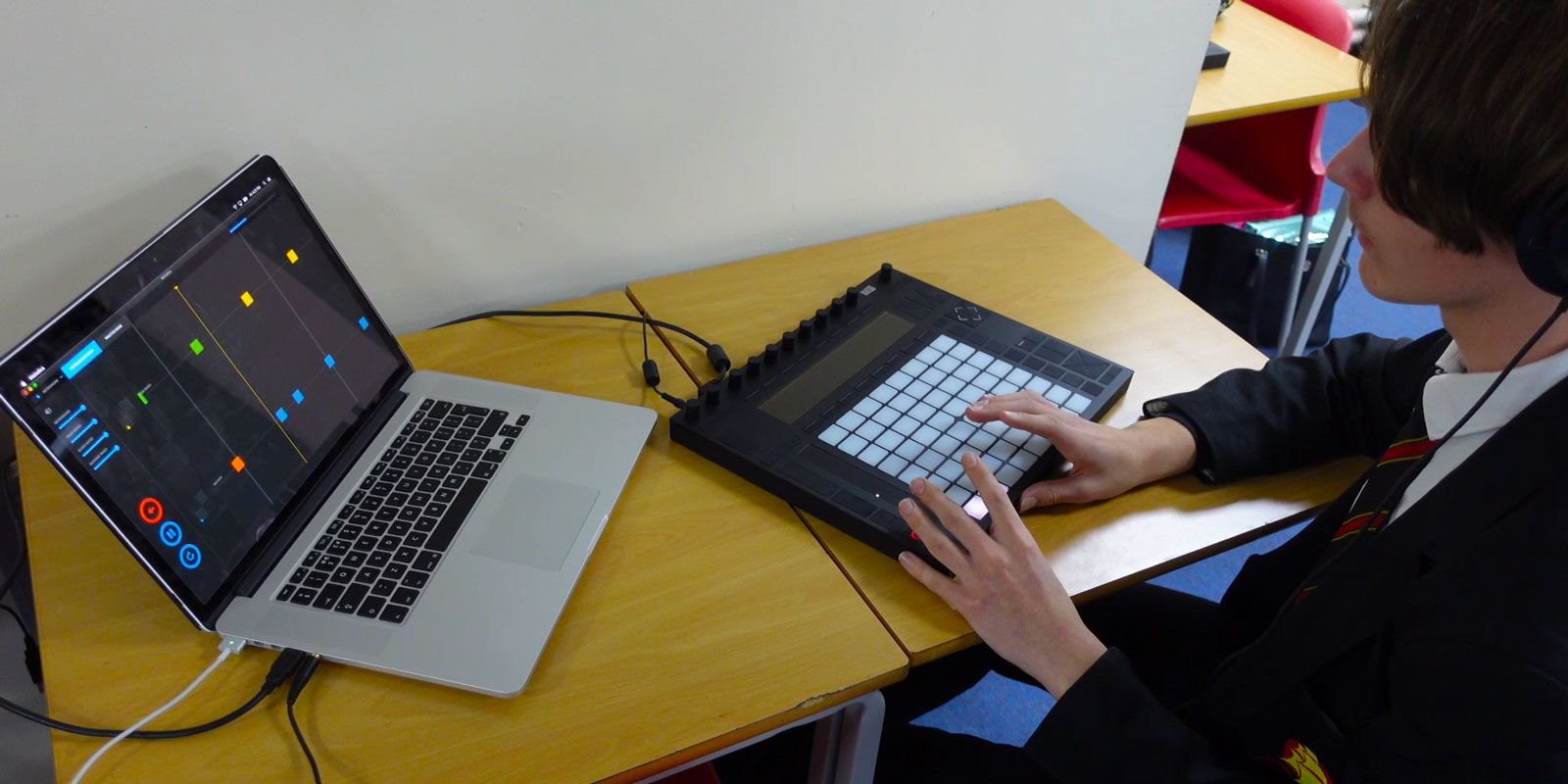

Plug and play: Music education’s not-so-quiet revolution
Digital technology has yet to redefine music education, but there is growing awareness that it could. Jennie Francis, who leads the Secondary PGCE Music course at Cambridge, and James Tuck - a musician, educator and Cambridge graduate - explain how music technology could make the subject more exciting and accessible than ever before.

Depending on your age, the phrase “classroom music lessons” may provoke recollections either of trying to get a tune out of a recorder, or of inputting sounds into a computer from a Casio keyboard. For the next generation, the memories could instead be of manipulating sampled beats during a live performance, turning sung vocals into digital chord patterns, or finger pad drumming for a GCSE.
Digital technology has yet to redefine music education, but there is growing awareness that it could. In the last 30 years, notation software has replaced manuscripts, many composers have started to work principally on computers, and digital audio workstations (DAWs) have replaced earlier recording and production tools. Such advances have the potential to make the subject more exciting and accessible, even for children who think that they have no musical ability at all.
Yet there is an associated challenge: how do we prepare new music teachers to take full advantage of such possibilities? And can we ready them to respond flexibly to further innovations that will emerge during their careers?
Jennie Francis, who leads the Secondary PGCE Music course at the University of Cambridge, believes that Initial Teacher Education (ITE), as well as establishing digital technology as part of a teacher’s toolkit, should introduce them to the new opportunities of a rapidly developing field.
“The music technology set-up we had when I was Head of Music at a school was basically some computers hooked up to keyboards and microphones. Students in the lower years would mostly use these to make arrangements and compositions by playing notes, inputting them with a mouse or using pre-recorded loops. I would say that’s quite a typical case.”
“It’s not without its benefits but as someone who now prepares music teachers of the future, I think they should also be prepared to explore the very different creative potential that computer technologies give young music-makers. It’s now possible for a student who has never even picked up an instrument to start playing, performing and creating almost immediately. The experience should be about so much more than putting loops into a workstation.”
Cambridge is one course that tries to instil this philosophy in pre-service teachers. During their PGCE, for example, students participate in a workshop which introduces DAWs and other, new, digital devices as instruments in their own right. In one session, trainees visit a school where they are introduced to its collection of ‘Push’ devices: MIDI pad controllers which are used to create music in the Ableton Live DAW. The pad is pre-loaded with samples such as fragments of the famous ‘Amen’ drum break, synthesiser sounds, and parts of Marvin Gaye’s vocal in I Heard it through the Grapevine. Four or five students combine the samples to create an original piece of music and perform it live.
The session shows how, by experimenting and inventing on these devices together, even teenagers with very little musical experience can quickly start developing musical know-how. In the space of a lesson or two, most can create an original composition and perform it to their class.
The training also introduces teachers to manifold other ways in which pupils can quickly get musical ideas out of their heads and into a computer. These include, for example, apps that convert a single human vocal into chords, or turn beatboxing into drumkit sounds.
"I’ve never seen much point training teachers or students about a particular piece of music tech, because they just go out of date. We should focus on challenging young people to do things they might have thought beyond their capabilities."
The workshops are designed and led by musician and educator James Tuck, a former Cambridge PGCE graduate who is Head of Music at Mayflower High School in Billericay, Essex.
“I’ve never seen much point training teachers or students about a particular piece of music tech, because they just go out of date,” he says. “We should focus on challenging young people to do things they might have thought beyond their capabilities.”
“I was the product of free instrumental music lessons when I was at school. Those aren’t available anymore, but technology is helping to restore a bit of social equality into music, given how much funding cuts have prevented some children from accessing music otherwise.”
Technology could also have an effect on uptake. Although music is taught through Key Stages 1-3, the subject is very unpopular. According to Ofqual data, fewer than one in 30 students took music GCSE in 2021, a fall of 34% since 2011. New Government guidance for teaching music in schools which aims to address this decline demands that: “All music educators have a stronger understanding of the role of technology in teaching music, including as a creative tool, and in enhancing teaching and learning and in making music more accessible and inclusive.”
The key word here, Francis suggests, is “creative”, when thinking about how this should be done. “It helps for music teachers to understand how technology is being picked up and used by musicians themselves The temptation can sometimes be to treat technology as an add-on instead.”
Academic research has highlighted the need to address such tendencies. A 2016 study in Australia, for example, found that many teachers struggled to see digital musicians as “authentic” and generally viewed computer technology simply as a “one-way information base”.
Artists themselves, such as the multiple Grammy award-winning DJ/producer Skrillex, have similarly expressed their frustration that these views prevail in schools.
As Francis and Tuck both observe, however, instruments like pad controllers and DAWs have an “instant gratification” appeal. Pupils can start making credible sounds on them almost immediately; learning about scales, intervals, chord progression and composition almost by stealth.
“They cultivate an understanding of how to make sounds together,” Tuck says. “If you’re doing drum samples on the Push, for example, you need to make those work with the student doing the vocal parts. It instantly and accessibly challenges any student to engage with that type of musical learning.”
Lessons which use technology in this manner may yet have to become commonplace in schools, but they have been advocated by theorists for some time. In 2012, for example, education research on ‘musical creativities’ critiqued the tendency of educators to make technology “fit in with current ways of working”. It also recorded experiments with DJing and MCing in schools which, researchers noticed, engaged disadvantaged students both because they could quickly start scratching and mixing by themselves, and because they were working in a musical language they understood.
"One thing new technology helps us to show trainees is that every student is potentially a musician."
A more recent study in New Zealand tracked a group of teachers as they learned to use DAWs for the first time, testing the thesis that these technologies require a different style of teaching. It found that they generally underwent a process of re-orientation, as they started to appreciate that DAWs might figure in their conception of music-making, and constituted instruments in their own right.
By the end of the exercise they had “an entirely new philosophy of music-making” and became advocates for these technologies as a powerful way to bring meaning and purpose into the music classroom for a wider range of students.
These views are echoed by the Cambridge trainees who attend Tuck’s workshop. “It will have a massive impact on how I view the use of technology in the classroom,” one recently told the course tutors on a feedback form. Another wrote: “The workshop really opened my eyes to how technology can open up doors for students that may not come from classical music backgrounds.”
Tuck is careful not to treat KS3 lessons on a Push controller as an incentive to study music longer-term. “The objective should be giving them an educational experience so that they understand how music shapes our lives – whether you encounter it at a wedding, a funeral, in films, or video games,” he says. “You don’t have to like it, you don’t have to study it further; but it helps to know about it.”
For those who do want to go further, however, he has also worked with both Ableton and Melodics (a company which produces a tool teaching students how to use a MIDI pad controller) to create pieces of music that can be used for GCSE performances using a pad based controller. “I had a number of pupils who were really into pad drumming,” he says. “I found myself thinking, what happens when they’re in Year 9, if they want to take music and that’s all they can play?”

Francis sees digital technology as one route through which musicians can enact the sociologist Basil Bernstein’s famous principle of ‘democratic education’, and the inclusion and participation he saw as fundamental to effective classroom practice. A body of research highlights the importance of this democratisation to widening music education’s reach, and the fact that students presently feel that by the time they reach GCSE age, access to music education is governed by an ‘elite code’ that makes it less accessible to many.
“Music teachers are a strange breed; they’re part of the tiny minority who persevered with a subject that most other students find exclusive,” she says. “They are often brilliant and passionate, but there is a danger that they could become part of the problem. One thing new technology helps us to show trainees is that every student is potentially a musician. Exploring practices that are new to the trainees can help them find more pathways upon which they might set students going on the route.”
Find out more about the Cambridge Secondary PGCE in Music on the Faculty of Education website.
Still images in this story:
Cambridge student using Ableton Push device (credit: James Tuck)
School pupil learning pad drumming on Push (credit: James Tuck)